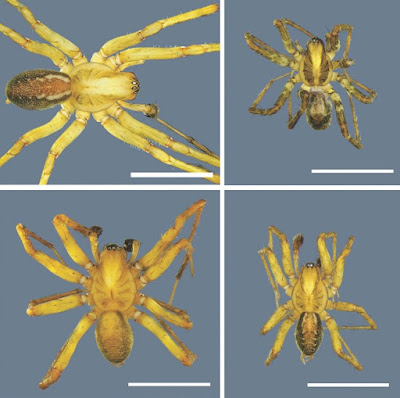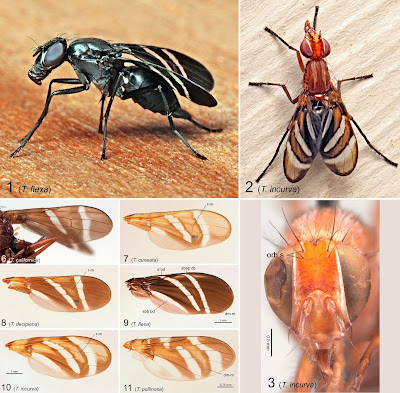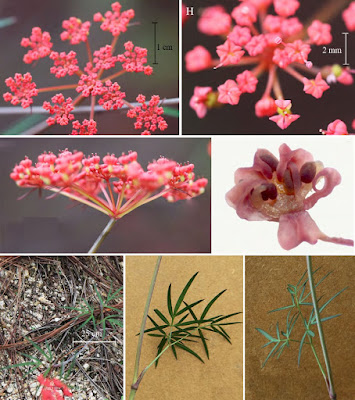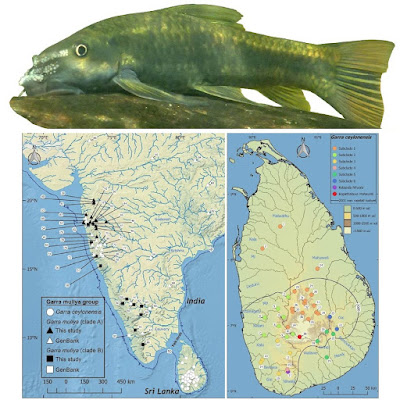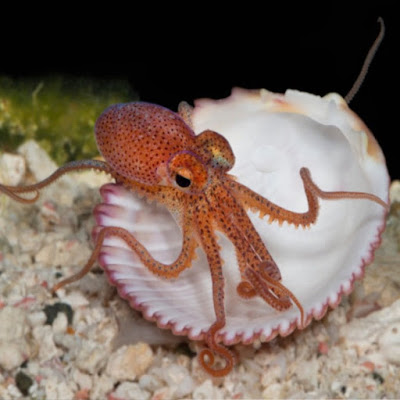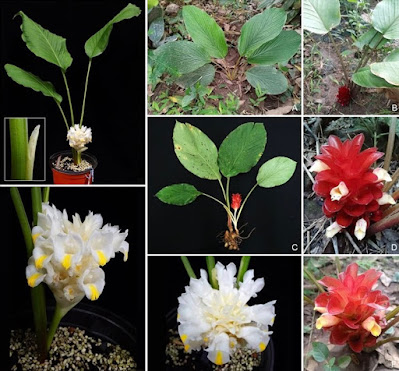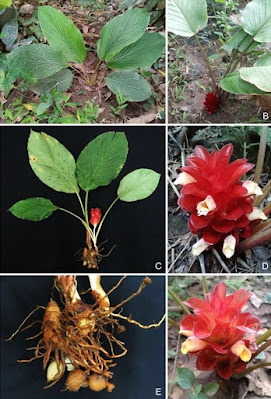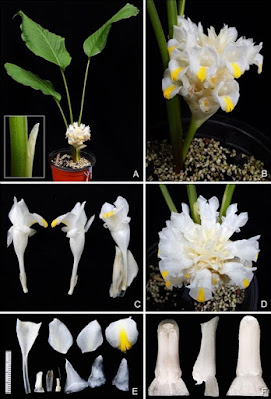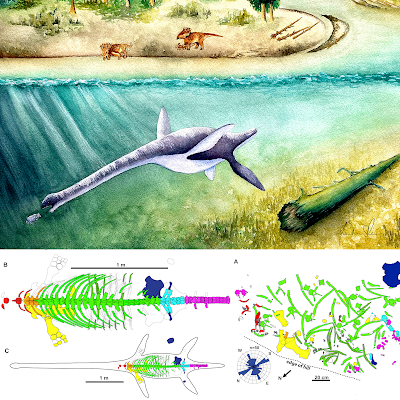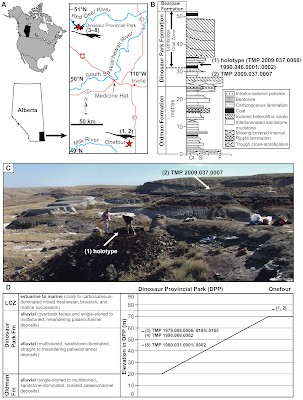[Most Recent Entries] [Calendar View]
Sunday, February 14th, 2021
| Time | Event | ||||
| 6:44a | [Arachnida • 2020] Four New Species of the Genus Novalena Chamberlin & Ivie, 1942 (Araneae: Agelenidae) from southeastern Mexican Montane Forests and First Record of Ocular Anomaly in the Genus
Abstract Four new species of the spider genus Novalena Chamberlin & Ivie, 1942 are described: Novalena bola sp. nov., N. mayae sp. nov., N. padillai sp. nov., and N. zootaxa sp. nov. All species were collected in montane forests in Chiapas, Mexico, and three of them occur in sympatry across their distribution range. Keywords: Araneae, Chiapas, Biosphere Reserves, taxonomy, tropical montane cloud forest Emmanuel F. Campuzano, Héctor Montaño-Moreno and Guillermo Ibarra-Núñez. 2020. Four New Species of the Genus Novalena Chamberlin & Ivie, 1942 (Araneae: Agelenidae) from southeastern Mexican Montane Forests and First Record of Ocular Anomaly in the Genus. Zootaxa. 4845(4); 565–575. DOI: 10.11646/zootaxa.4845.4.6 | ||||
| 7:04a | [Entomology • 2021] Revision of the Nearctic Genus Tritoxa Loew (Diptera: Ulidiidae) Abstract The species of the Nearctic genus Tritoxa Loew are revised. Seven species of Tritoxa are recognized, including two new species: T. californica sp. nov. (type locality: near Spring Garden, California), T. cuneata Loew, T. decipiens sp. nov. (type locality: near Smithers, British Columbia), T. flexa (Wiedemann), T. incurva Loew, T. pollinosa Cole and T. ra Harriot. One species from California and Nevada based on female specimens remains undescribed. A key to all species is provided, species are illustrated and their distributions mapped. Wing patterns may be used to differentiate among all species, although confident identification of certain sympatric species requires confirmation by examination of male genitalia. Keywords: Diptera, Ulidiidae, Tritoxa, Nearctic, new species, black onion fly
Bradley J. Sinclair, Alyssa M. MacLeod and Terry A. Wheeler. 2021. Revision of the Nearctic Genus Tritoxa Loew (Diptera: Ulidiidae). Zootaxa. 4920(3); 359–379. DOI: 10.11646/zootaxa.4920.3.3 | ||||
| 7:24a | [Botany • 2020] Prionosciadium tamayoi (Apiaceae) • A New Species from western Mexico
Prionosciadium tamayoi is described as new species for science. The species is separated from those known within the genus for its linear, and entire or crenate foliar divisions, its small fruits and coral red-coloured flowers. Information on its habitat is provided and its morphological characters are illustrated. In addition, the new species is compared with the most related taxa. Keywords: Arracacia clade; Endemism; Perennial herb; Sierra of Cuale; Limestone soils; Umbelliferae.  Prionosciadium tamayoi Cuevas et N. M. Núñez, sp. nov. Etimología. La especie se nombra en honor del maestro Roberto González Tamayo, uno de los mejores conocedores y recolectores de orquídeas en el occidente de México, con cientos de ellas recogidas en la sierra de Cuale, lugar donde aún se le recuerda por los pobladores como el “señor de los lirios”. Etymology. The species is named in honor of the teacher Roberto González Tamayo, one of the best orchid specialist and collectors in the west of Mexico, with hundreds of them collected in the Sierra de Cuale, a place where it is still remembered by the inhabitants as the "señor de los lirios - Lord of the Lilies." Ramón Cuevas-Guzmán, Nora M. Núñez-López, Susana Canales-Piña and José Guadalupe Morales-Arias. 2020. Prionosciadium tamayoi (Apiaceae), A New Species from western Mexico. Revista Mexicana de Biodiversidad. 91; e913338. DOI: 10.22201/ib.20078706e.2020.91.3338 | ||||
| 7:34a | [Botany • 2020] Aristolochia yachangensis (Aristolochiaceae) • A New Species from Limestone Areas in Guangxi, China
Aristolochia yachangensis B.G.Huang, Yan Liu & Y.S.Huang, sp. nov. Diagnosis: Aristolochia yachangensis is morphologically similar to A. fangchi Y.C.Wu ex L.D.Chow & S.M.Hwang, A. petelotii O.C.Schmidt and A. championii Merr. & Chun, but can be distinguished from them by stems irregularly striate, sparsely yellowish-brown pubescent or glabrous; leaf blade 1.5–3 cm wide; cymes on old woody stems; basal portion of perianth tube 2–3 cm long, shorter than the upper; limb yellow, with dark purple mural–like stripes; throat yellow; capsule ellipsoid. Detailed morphological comparisons amongst the four species of A. yachangensis, A. championii, A. petelotii and A. fangchi are summarised in Table 1.
| ||||
| 7:40a | [Ichthyology • 2021] Island Colonization by A ‘Rheophilic’ Fish: the Phylogeography of Garra ceylonensis (Teleostei: Cyprinidae) in Sri Lanka
Abstract Despite exhibiting multiple morphological adaptations to living in swiftly flowing water (rheophily), Garra ceylonensis is one of the most widely distributed freshwater fish in Sri Lanka. It is thus an ideal organism to reconstruct the evolutionary history of a widespread, yet morphologically specialized, freshwater fish in a tropical-island setting. We analysed the phylogenetic and phylogeographic relationships of G. ceylonensis based on two mitochondrial and one nuclear genes. G. ceylonensis is shown to be monophyletic, with a sister-group relationship to the Indian species Garra mullya. Our results suggest a single colonization of Sri Lanka by ancestral Garra, in the late Pliocene. This suggests that the Palk Isthmus, which was exposed for most of the Pleistocene, had a hydroclimate unsuited to the dispersal of fishes such as Garra. G. ceylonensis exhibits strong phylogeographic structure: six subclades are distributed as genetically distinct populations in clusters of contiguous river basins, albeit with two exceptions. Our data reveal one or more Pleistocene extirpation events, evidently driven by aridification, with relict populations subsequently re-colonizing the island. The phylogeographic structure of G. ceylonensis suggests inter-basin dispersal largely through headwater capture, likely facilitated by free-swimming post-larvae. The Peninsular-Indian species G. mullya comprises two genetically distinct parapatric clades, which may represent distinct species. Keywords: biogeography, dispersal, freshwater fish, Labeoninae, phylogeny, Pleistocene, torrent fish Hiranya Sudasinghe, Neelesh Dahanukar, Rajeev Raghavan, Tharani Senavirathna, Dipeshwari J Shewale, Mandar S Paingankar, Anjalie Amarasinghe, Rohan Pethiyagoda, Lukas Rüber and Madhava Meegaskumbura. 2021. Island Colonization by A ‘Rheophilic’ Fish: the Phylogeography of Garra ceylonensis (Teleostei: Cyprinidae) in Sri Lanka. Biological Journal of the Linnean Society. blaa221. DOI: 10.1093/biolinnean/blaa221 | ||||
| 7:42a | [Cephalopoda • 2020] Octopus jeraldi • Octopods of Deep reefs off Curaçao, southern Caribbean including Description of One Newly Discovered Species Abstract Recent exploratory research on poorly studied deep reefs in the Caribbean Sea has yielded substantial new information about the diversity of deep-reef fishes and some invertebrates, but the diversity of deep-reef cephalopods has not been assessed. Using images, videos, and specimens collected with the aid of a manned submersible, as well as DNA sequences derived from the specimens, we surveyed the cephalopod diversity of the mesophotic and rariphotic reef communities in Curaçao, southern Caribbean. Among the 50 records comprising 15 specimens, 39 photos, and 15 videos (of which six specimens matched video records), we found Octopus hummelincki Adam, 1937, Pteroctopus cf. tetracirrhus Delle Chiaje, 1830, Scaeurgus unicirrhus Delle Chiaje, 1841, Paroctopus mercatoris Adam, 1937, and Lepidoctopus joaquini Haimovici and Sales, 2019. In addition, we found one group of octopods, with two specimens that did not correspond to any known species. We describe this as a new species. One specimen of Lepidoctopus joaquini was hectocotylized on two arms. Abigail Pratt, Carole Baldwin and Michael Vecchione. 2020. Octopods of Deep reefs off Curaçao, southern Caribbean including Description of One Newly Discovered Species. Bulletin of Marine Science. 96(2); 297-308. DOI: 10.5343/bms.2019.0040 | ||||
| 7:47a | [Botany • 2020] Curcuma cinnabarina & C. eburnea (Curcuma subg. Ecomatae, Zingiberaceae) • Two New Species from Thailand
Abstract Curcuma cinnabarina and C. eburnea (Curcuma subg. Ecomatae, Zingiberaceae), two new species from Thailand, are described and illustrated here. They are compared with the morphologically closest species Curcuma rubrobracteata and C. pierreana, respectively. Detailed descriptions, colour plates, and information on their distribution, ecology, phenology and uses are also provided. Preliminary IUCN conservation assessments of these species are proposed. Keywords: Curcuma pierreana, Curcuma rubrobracteata, Curcuma subg. Ecomatae, Lampang province, Nong Bua Lam Phu province, Udon Thani province Curcuma cinnabarina Škorničk. & Soonthornk., sp. nov. Etymology. The specific epithet is derived from Latin cinnabarinus, referring to the dark red colour of the bracts of this species. Vernacular names and uses. Usa (ù-saa) (อุษา) (usa = dawn). The rhizomes are used in local medicine as an ingredient in balm, and plants are occasionally also sold as ornamentals. Curcuma eburnea Škorničk., Suksathan & Soonthornk., sp. nov. Etymology. The specific epithet derives from Latin eburneus and refers to the ivory/creamwhite colour of the bracts of this species. Vernacular names and uses. In Lampang province, the plant is known as kai laen (ไข่แลน) (= monitor lizard eggs, referring to the colour of the bracts), and young inflorescences are eaten by the locals as a vegetable. According to Wannakrairoj (1996), the common name of this species in Thailand is thep prasit (theph pras̄ithṭhi) (ว่านเทพประสิทธิ์) (= plant created by an angel). Dried flowers are used in the composition of Buddhist amulets and usually soaked in sandalwood oil for the tattooing ritual. J. Leong-Škorničková, S. Soonthornkalump and P. Suksathan. 2020. Curcuma cinnabarina and C. eburnea (Zingiberaceae: Zingiberoideae), Two New Species from Thailand. Edinburgh Journal of Botany. 77(3): 391 - 402. DOI: 10.1017/S0960428620000049 | ||||
| 8:13a | [Paleontology • 2021] Fluvionectes sloanae • A New Elasmosaurid (Sauropterygia: Plesiosauria) from the non-marine to paralic Dinosaur Park Formation of southern Alberta, Canada
Abstract Elasmosaurid plesiosaurian remains have been documented from non-marine to paralic (fluvial to estuarine) sediments of the upper Campanian Dinosaur Park Formation (DPF) of southern Alberta since 1898. Despite this long collection history, this material has received relatively little research attention, largely due to the highly fragmentary nature of most recovered specimens. However, this assemblage is significant, as it constitutes a rare occurrence of plesiosaurian remains in a non-marine depositional environment. This study reports on a recently collected and prepared specimen, which represents the most complete elasmosaurid yet collected from the DPF. This specimen preserves the trunk region, the base of the neck and tail, a partial fore and hind limb, and tooth, and is sufficiently complete to be assigned as the holotype of a new genus and species. This new taxon is diagnosed by a distinctive character state combination including a boomerang-shaped clavicular arch with acute anterior process, convex anterolateral margin, deeply embayed posterior margin, and pronounced ventral keel, together with the presence of 22 dorsal vertebrae, and the anterior dorsal centra bearing a ventral notch. The DPF plesiosaurian fossils were recovered from both estuarine/bay and fluvial palaeochannel sediments. The holotype skeleton represents an osteologically mature individual with an estimated body length of around 5 m, although the largest referred DPF elasmosaurid might have been closer to 7 m, which is considerably larger than other plesiosaurians reported from non-marine deposits. This suggests small-body lengths relative to typical elasmosaurids from marine settings, but is consistent with other plesiosaurians recovered from non-marine sediments. The identification of a distinct elasmosaurid taxon in the DPF might be evidence of niche-partitioning among the predominantly oceanic members of the ubiquitous plesiosaurian clade. Systematic Palaeontology Sauropterygia Owen, 1860 Plesiosauria De Blainville, 1835 Elasmosauridae Cope, 1869 Fluvionectes gen. nov. Fluvionectes sloanae sp. nov. Holotype: TMP 2009.037.0068/1990.046.0001/.0002, partial skeleton consisting of a tooth, posterior cervical vertebral series, the complete pectoral, dorsal, and sacral vertebral series, the anterior half of the caudal vertebral series, ribs, gastralia, partial pectoral and pelvic girdles, and a partial fore and hind limb. Type locality and horizon: Sage Creek Provincial Grazing Reserve, near Onefour, Alberta. Precise locality data on file at the TMP. TMP 1990.046.0001, TMP 1990.046.0002, and TMP 2009.037.0068 all derive from a stratum immediately overlying the basalmost coal bed of the Lethbridge Coal Zone in the Dinosaur Park Formation (DPF), upper Campanian, Upper Cretaceous. Etymology: The genus name is derived from “fluvius”, the Latin word for river, and “nectes”, the Latinized Greek word (nektes) for swimmer (gender; masculine). We are aware that the connecting vowel “o” is inappropriate, but this is a deliberate choice on our part as we prefer this spelling and pronunciation. This is not an inadvertent error and, therefore, does not require subsequent correction according to the International Code of Zoological Nomenclature (International Commission on Zoological Nomenclature, 1999: art. 32.5). The species name honours Donna Sloan who discovered the holotype, and for her long service to palaeontology, both in the field and as the scientific illustrator at the Royal Tyrrell Museum of Palaeontology (gender; feminine). Diagnosis: Elasmosaurid possessing a boomerang-shaped clavicular arch with an acute anterior process, convex anterolateral margin, posterior margin with a deep embayment on either side, and a pronounced ventral keel, 22 dorsal vertebrae, and anterior dorsal centra with a ventral notch. Other manifest character states include: posterior cervical vertebra with high dorsoventral aspect; three pectoral vertebrae; five sacral vertebrae; scapula with an elongate dorsal ramus; coracoid with an open (non-enclosed) cordiform intercoracoid fenestra; pubis with an anterolateral embayment; and a postaxial supernumerary epipodial facet on the humerus.
James A. Campbell, Mark T. Mitchell, Michael J. Ryan and Jason S. Anderson. 2021. A New Elasmosaurid (Sauropterygia: Plesiosauria) from the non-marine to paralic Dinosaur Park Formation of southern Alberta, Canada. PeerJ. 9:e10720. DOI: 10.7717/peerj.10720 |
| << Previous Day |
2021/02/14 [Calendar] |
Next Day >> |
